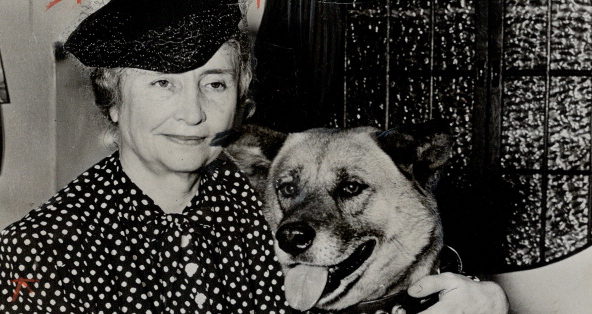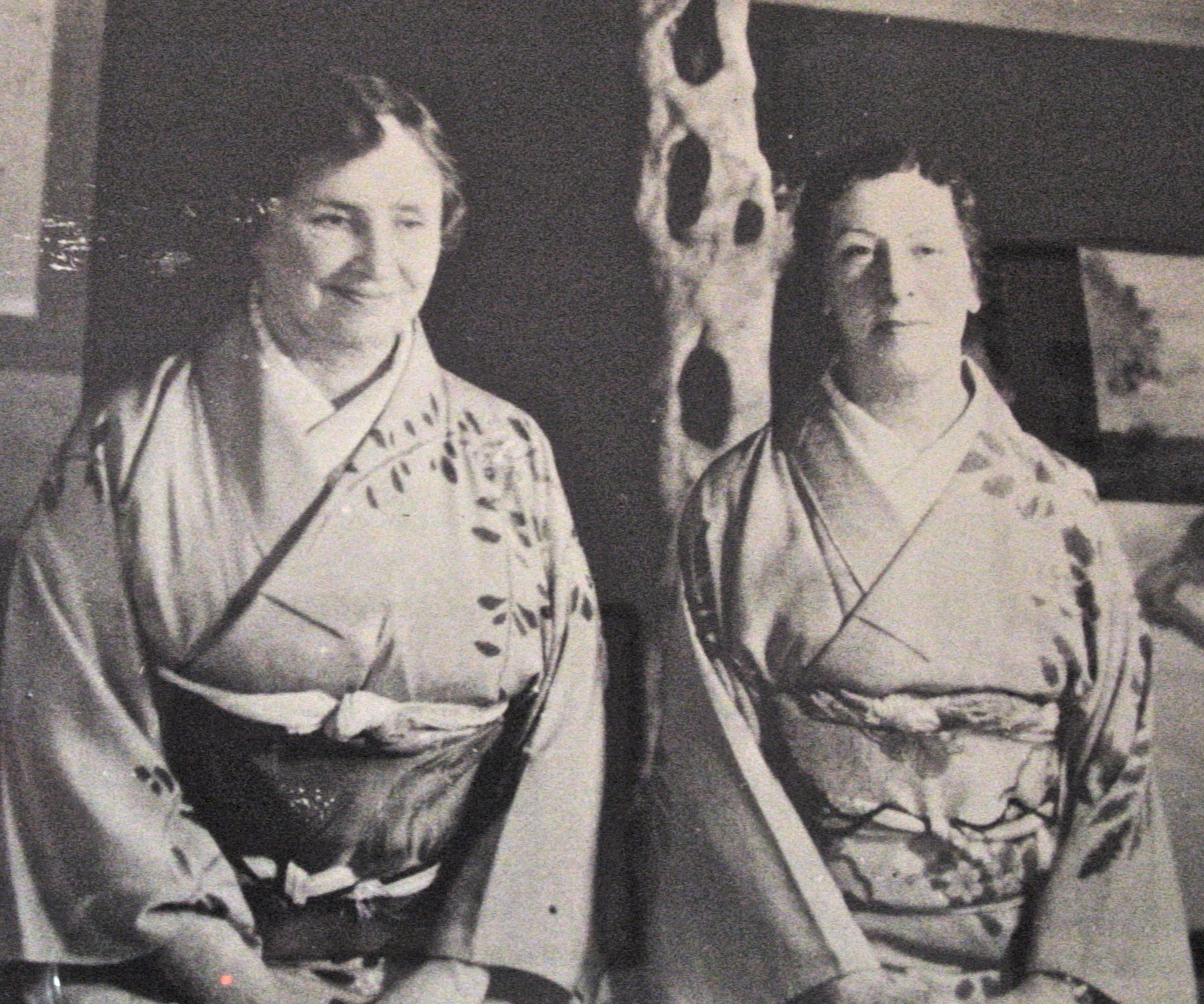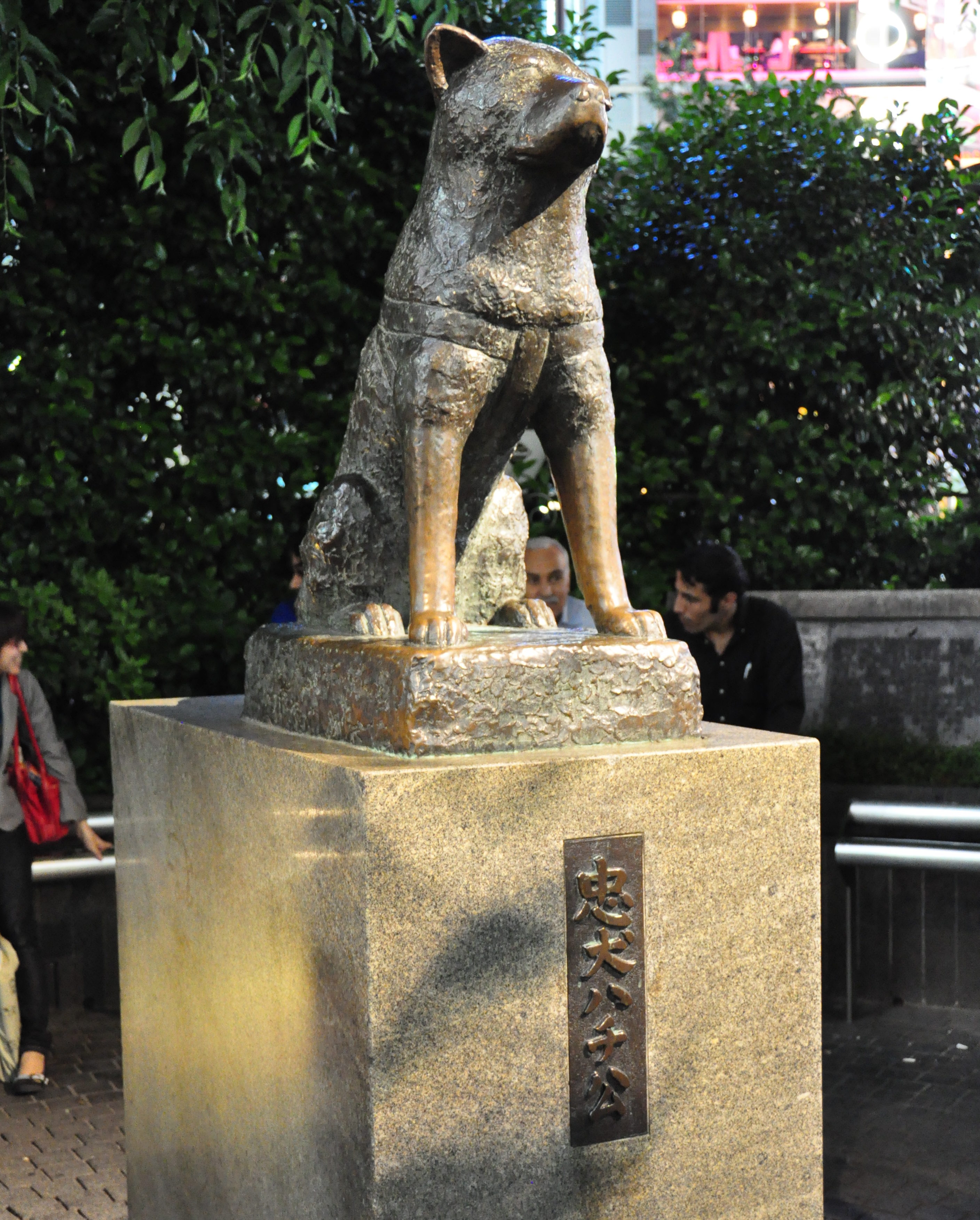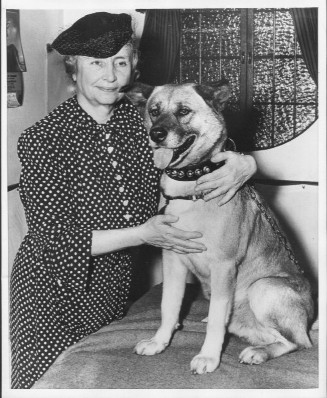Helen Keller’s first trip to Japan influenced her in many ways, including her love of dogs. She brought home the first Akita to the United States; she could have had any dog so why did she pick the Akita?

The Visit to Japan
In 1937 the Western world was on the brink of World War II and yet to touch the East. Japan was prospering and they shifted focus to helping educate the disabled. To bolster their efforts, the Japanese invited Helen Keller to lecture about her life and education at their prestigious universities.
Originally, Keller was hesitant about going because her mentor and lifelong friend Anne Sullivan at the time was ill. Sullivan encouraged Keller to try out a trip independently and succeeded. As timing would have it, Sullivan passed away before Keller departed for Japan. Keller boarded the ship with her secretary, Ms. Polly Thompson.
Upon arrival to Japan, she met with the Japanese royalty and the government officials and was on her tour. They visited Alata City and discussed education for the disabled and Keller showed the Japanese what her communication in tactile Sign Language looked like. She guided the schools and programs on how to improve; Keller won over the Japanese with her tenacity and charm. She was incredibly revered in Japan with people nicknaming her “Saint Keller.”

The Staying Influence of Japan’s Most Loyal Dog Even After Death
While on tour, Keller visited Akita City and there she learned about the breed that the city was named after. She was told the story of Japan’s most famous dog: Hachiko.
Hachiko was an Akita who waited for his owner to arrive at the train station every day and the pair would walk home together. They did this together for several years until his owner’s untimely death. After the owner’s death, Hachiko continued to wait at the train station in the exact same spot for nine years until his own death. Today, the statue is in that particular spot.
After listening to the story, Keller was impressed and wished for an Akita of her own. The Japanese officials contacted a young police officer named Mr. Ichiro Ogasawara to arrange for a puppy to be gifted to Keller; Mr. Ogasawara was a devout afficionado of the Akitas and owned a couple himself. He used his contacts to obtain a tan puppy named Kamikaze-Go, who was to be Keller’s first ever Akita.

Life with Kamikaze-Go and Kenzan-go
Kamikaze-Go was introduced to Keller and Keller fell in love; Kamikaze-Go stayed with Mr. Ogasawara for two months while Keller finished her tour of Japan and then China. Keller’s trip was interrupted when World War II arrived to the Pacific Forum, starting in China.
Keller and Ms. Thompson were ordered to immediately board a ship back to the United States and Kamikaze-Go went with them. Upon arrival to the United States, Kamikaze-Go became the first official Akita to touch American soil.
Keller noted in her journals about Kamikaze-Go’s extra sensitivity to her emotions and moods and his responsiveness. Whenever Keller was sad, Kamikaze-Go would sit beside her and lick away her tears. Kamikaze-Go exhibited signs that he automatically knew that Keller was his one and only master and held intense loyalty to her. To others Kamikaze-Go was very respectful, another quality Ms. Thompson noticed too along with Keller.
Unfortunately for Keller and Kamikaze-Go, the puppy contracted distemper and passed away at 7 ½ months old. Keller was heartbroken and expressed in a letter to Mr. Ogasawara:
“if ever there was an angel in fur, it was Kamikaze. I know I shall never feel quite the same tenderness for any other pet…”

Arrival of Kenzan-Go and His Breed Recognition in the United States
Upon receiving the letter, Mr. Ogasawara and the Japanese government quickly arranged for a second Akita puppy to be shipped to the United States for Keller: Kenzan-Go. When the new puppy arrived, his photo was taken by the New York Times and published in the newspaper, announcing to the world about Keller’s beloved Akita.
With this publication of the photo of Keller with Kenzan-Go and accompanying story, two things happened: more Akitas arrived to the United States and a Japanese stranger mailed the article to Japan.

The American soldiers stationed in Japan heard the news about Keller and her Akitas, they too were inspired and brought home Akitas themselves. This is how the breed became a mainstay in the United States and was later officially recognized by the American Kennel Club in 1973.
The other effect of the New York Times article was a Japanese-American man saw the newspaper article and clipped it, then mailed it to the Japanese government. The government then passed along the news to Mr. Ogasawara; the news put him at ease finally since he was concerned about Kenzan-Go’s wellbeing during the journey.
At the dock, Keller reported that Kenzan-Go approached her with a resolute confidence. There was no awkwardness or resistance, Kenzan-Go went with Keller and Ms. Thompson as if he knew them all his life. Kenzan-Go became lovingly known as Go-go and exhibited excellent manners in the house; at two feet tall and one hundred pounds, he gracefully maneuver through rooms with fragile antiques and old furniture as if he understood their value.
Keller witnessed the incredible nature of the noble Akita breed firsthand and mentions it in nearly every writing on her dogs. She and Ms. Thompson never forgot about Mr. Ogasawara and his friendship.
A Lasting Friendship Thanks To The Akita Brothers
In 1947, ten years after the war finished, Keller and Ms. Thompson visited Japan one last time. They stopped to visit Mr. Ogasawara and personally thanked him for both Kamikaze-Go and Kenzan-Go. Mr. Ogasawara wrote of his last encounter with Keller:
“After the conclusion of the war, in the summer of 1947, out of the blue, I received a message from Miss Keller through the Mainichi Press that she had come to Japan on a speaking engagement. She was on her way to Tokyo, from Hokkaido, and wanted to meet me at Akita Station.
At the appointed date, I arrived at the station a little early, and waited in the area where Miss Keller’s car would stop. I remember clearly how I anxiously wondered if she would remember me. The train finally arrived and as I worried about the short train stop, Miss Thomson spotted me and called out, “Ogasawara!” The anxiety and the span of ten years quickly disappeared as I hurriedly followed Miss Thomson to where Miss Keller was seated in the train. Miss Keller extended her hands and asked me about the dogs, about the situation during the war, thanked me for sending her Kamikaze and Kenzan.
Just before we said goodbye, I asked Miss Keller for her autograph and she readily complied. The meeting was a short one, and was our last meeting. Though more than thirty years have passed since these events have occurred, the memory of Miss Keller and Miss Thomson’s deep love for Akitas remain fresh and deep in my heart.”
Ichiro Ogasawara became a Vice-Chairman on the board of the Akitainu Hozonkai, an organization dedicated to the preservation of the Akita lines.

Sources:
Northland Akitas-Mr. Ogasawara’s Letter



